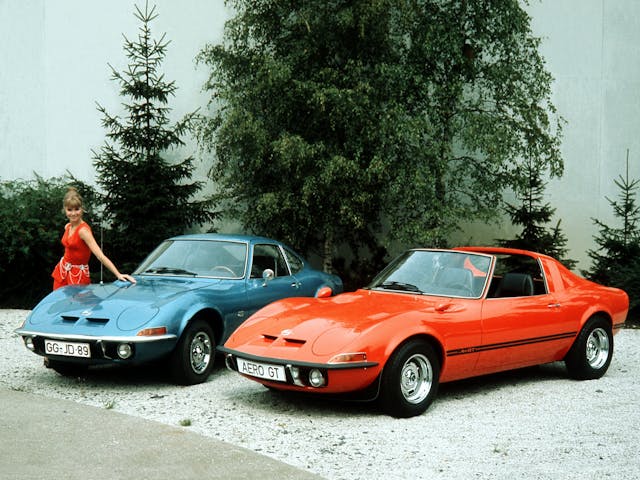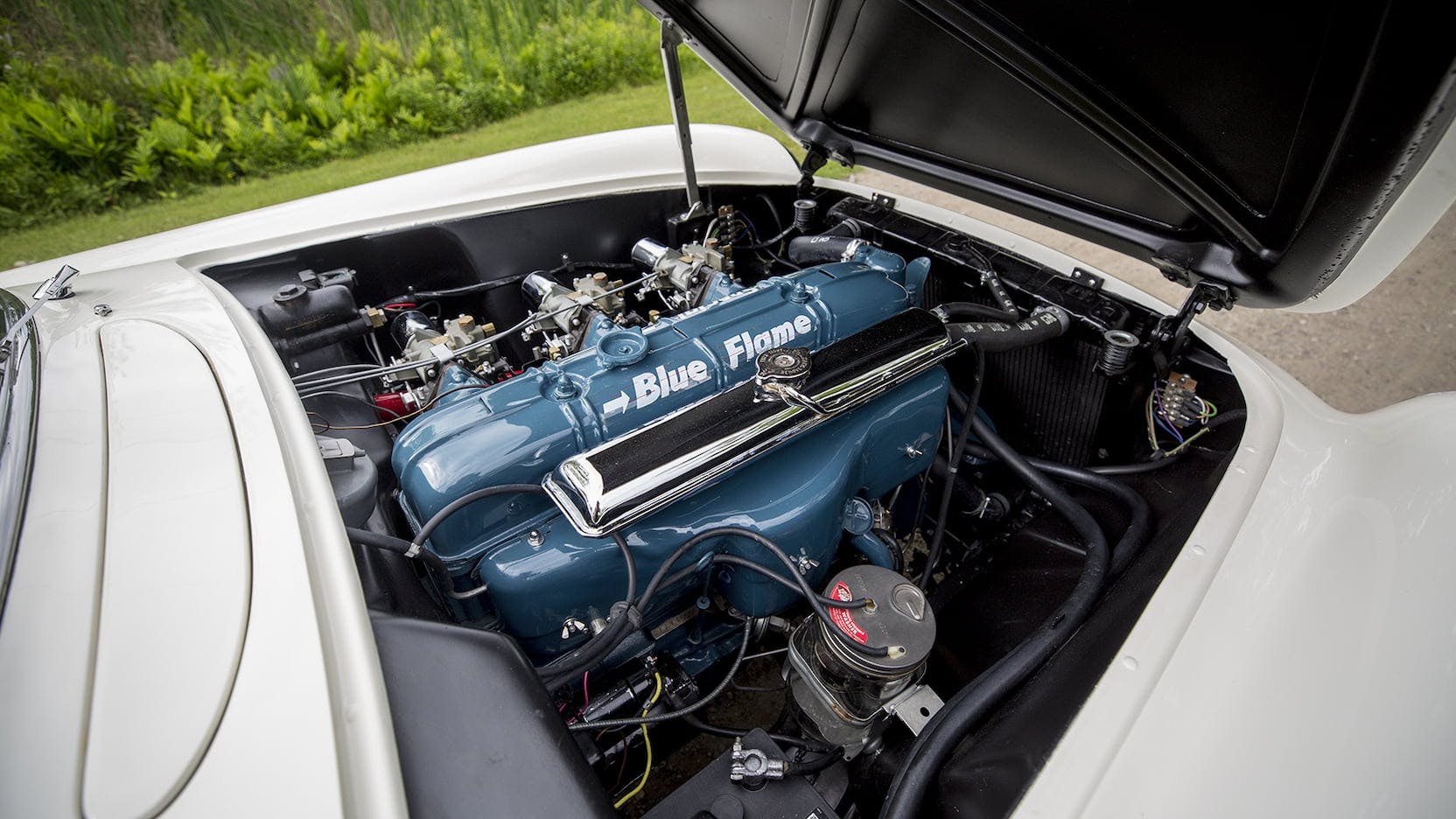Media | Articles
5 Corvette secrets we can’t stop talking about
Given the rumors that Chevrolet may spin the Corvette into a sub-brand, perhaps including an electric SUV, it’s only natural that some long for simpler times. This list, which originally ran in 2012, reminds us that nothing’s guaranteed—not even the birth of America’s sports car. —Ed.
The Corvette, America’s favorite sports car, has been in production since 1953. Seven decades would provide plenty of time, you’d think, to air its secrets, but there are still a few things that aren’t common knowledge about this American icon.
GM almost killed it
The 1953 model year was really just a dress rehearsal, but when production began in earnest for 1954, there were more cars than buyers, who weren’t impressed with the lack of roll-up windows and modest performance.
GM was seriously thinking about axing the car when Ford announced the Thunderbird. Not wishing to give Ford the PR win for “killing” the Corvette with the T-Bird, GM pressed on and got serious about making it into a real performance car.

The Corvette didn’t originally have a V-8
Although it would seem unthinkable today, the original Corvette wasn’t powered by a V-8. Chevy’s modern small block V-8 didn’t exist in 1953, so for the first two model years, the Corvette was powered by a somewhat anemic six-cylinder motor.
Marketplace
Buy and sell classics with confidence
See secret number three.

The savior of the all-American sports car spent his childhood in Russia
Engineer Zora Arkus-Duntov, the man who transformed the Corvette from a pleasant little roadster into a serious, V-8-powered sports car, wasn’t born in America. However, as George Will stated in his 1996 obituary, “He was born to be an American.”
Duntov was born in 1909 in Belgium to Russian parents. He moved back to Leningrad with them as a child, a fact that GM rarely mentioned in the Cold War era of the 1950s. His ashes are interred at the National Corvette Museum in Bowling Green, Kentucky.

There was no 1983 Corvette
It must have killed GM, because 1983 would have been the car’s 30th anniversary, but there was actually no 1983 Corvette.
A complete re-design of the car had taken place and there were quality-control and supplier issues. By the time they were all sorted out, there were just four months to go in the 1983 model year. GM just decided to skip 1983 altogether and the first new C4 Corvettes were all early 1984 models.
In retrospect, maybe they should have skipped 1984 as well: Cars from that model year are known for a punishing ride and numerous faults, not unlike the previous generation’s first-year model from 1968.

The Corvette had a mini-me twin
GM’s German subsidiary, Adam Opel, AG (better known simply as Opel), was suffering with a particularly staid image in the 1960s. Bob Lutz sent stylist Clare MacKichan to Opel spark a little creativity.
Not coincidentally, MacKichan was a Corvette guy and Opel’s little sports car, the 1.9-liter Opel GT, came out looking for all the world like a two-thirds size 1968 Corvette. They’re rare today, but the reaction an Opel GT inspires when parked next to a 1968–72 Corvette is priceless.
Check out the Hagerty Media homepage so you don’t miss a single story, or better yet, bookmark it.






Regarding the 5 Corvette secrets, there were actually about 43 1983 models produced to test production for the newly designed model. A couple were sacrificed for crash tests. The rest were crushed or rebadged as 1984 models except for 1 which was “stolen” or squirreled away by employees and later given to the National Corvette Museum. So there is one 1983 model which was resurrected from the sinkhole disaster at the museum.
The 1983 Corvette was not involved in the sinkhole disaster at the museum.
You either ARE a corvette LOVER or not. End period
I have a 78 VETTE , replaced the engine at 50k mi, FI, GREAT CAR!
Didn’t a guy named FITCH HELP DESIGN THE CORVETTE?
John Fitch was involved with Corvette racing teams as driver and team manager in the 50s and early 60s. Didn’t have anything to do with designing the Corvette although he may have had some input on racing modifications.
“#2 there were a number of 1983 C4 Corvettes. They were tested and pilot cars for the new KY plant. But GM delayed the car and decided to skip the into to 84. ” The real reason GM delayed the 1983 C4 Corvettes was due to one that was rearended by a diesel Pontiac as it was being tested at the Milford Proving Grounds. The Corvette burst into flames because the fuel tank was ruptured in the crash, causing 3rd degree burns to the driver. That caused the problem that the Engineers had to overcome before production of the newly designed Corvette could begin.
My father was a GM Exec back in ‘53 and brought home one of the Polo White pre production Corvettes. The reaction to it was something I’ve never seen since. Everywhere we went it was the center of attention. We took it to church one Sunday, 10am service, didn’t get out of the parking lot till after 3pm. Everyone wanted a ride in it. We almost didn’t get across the Ambassador Bridge to Canada in route to the family cottage on Lake Erie. The border guards had us pull over for a “full inspection”. What the heck is that? Was a common refrain.
As for for that Blue Flame in line six….
With the triple carbs it looked mighty impressive and for the time, 1953, it was no slouch as demonstrated on more that a few “road test”.
True, mated to the Slip ‘n Slide Powerglide 2 speed automatic trans you were not able to row the gears like Juan Fongio but who cared. It was cool. It was unique. It was (all) American.
Chevy hand assembled the 1953 Corvettes in Michigan; each car was identical — white with a red interior, a Blue Flame six-cylinder 150 HP engine, and a two-speed powerglide automatic transmission. Production was moved to a new plant in St Louis for the 1954 models. Production quality was not great, even for the times, as the cloth tops looked like an afterthought, and the anachronistic ‘side curtain’ plexiglass side windows leaked, rattled, and were cumbersome to install, so they were often just removed and not used. Not a great start for America’s first real sports car.
Some of the 300 1953 models remained unsold on dealer lots, even after the 1954 models were introduced. A few dealers sold holdover 1953 Corvettes as 1954 models because they were virtually identical except for the serial numbers. Chevy built about 3600 Corvettes as 1954 models, and they too remained on dealer lots well past the end of the model year. This is when GM seriously considered killing the Corvette.
For the 1955 models Chevy continued the same body style, but inspired by Zora Arkus Duntov, it introduced a number of changes and improvements, most notably the 265 CI V8 engine and the availability of a 3-speed manual transmission, which was the beginning of the ‘small block’ era that continues (in modified form) even today. Due to lackluster sales of the earlier models, Chevy only built 700 Corvettes for the 1955 model year.
Fast forward a few years, and the 1953 Corvettes began to hold their value a bit better than the 1954 models, due to the ‘first year’ aura and their limited production, though neither were worth anywhere near what the 1955 and later models were worth in the resale market due to their V8 engines, manual transmissions, and greatly improved performance and handling characteristics.
A personal story — a neighbor was the first owner of a very tired 1954 Corvette that he was having a hard time selling because he was asking too much for the worst year Corvette model, in poor condition. I told a ‘Corvette nut’ friend about the car and he came over, took one look at the car, and bought it without ever driving it. He and the neighbor spent a couple of hours scouring his carport storeroom and attic for various parts, including the original side curtain windows, hub caps, air cleaners, and a few other typical parts that were often discarded. He then loaded the car and the parts onto his trailer, paid the neighbor, and happily drove away, It turns out that when my friend first opened the door to the car, he could see the plate on the door jam, and it was what he was hoping to find. The first four digits of the serial number for the car were E53F….. My neighbor had apparently bought one of the holdover cars in 1954 from a Denver Chevy dealer who billed the car out as a current year model.
My 4 brothers and I own a RSTT, MCLARAN P, 2019 CORVETTE, ID Rather have a 2022 vette
My father-in-law was provided a brand new ‘84 by GM. His claim to fame was doing the Chevy Blazer “Sun Blazer” conversion. GM paid him to develop the return to convertibles which, I believe ended in 1980. I remember him taking a sawzall to the ‘84 and taking the roof off! When done, it was sent back to GM for refinement and I believe it became available in ‘86.